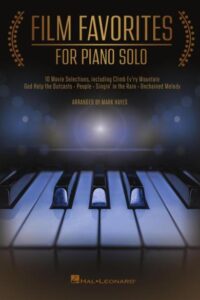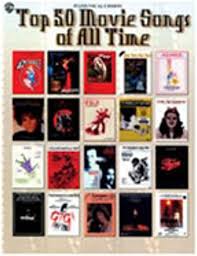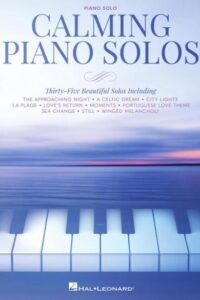Table of Contents
Come join us now, and enjoy playing your beloved music and browse through great scores of every level and styles!
Can’t find the songbook you’re looking for? Please, email us at: sheetmusiclibrarypdf@gmail.com We’d like to help you!
Let the river run – Carly Simon (SATB) sheet music, Noten, partitura, spartiti, partition, 楽譜

Best Sheet Music download from our Library.

Please, subscribe to our Library.
If you are already a subscriber, please, check our NEW SCORES’ page every month for new sheet music. THANK YOU!
The story behind Carly Simon’s iconic song “Let the River Run”
The story behind Carly Simon’s iconic song “Let the River Run” is deeply intertwined with the 1988 film “Working Girl” and its themes of ambition, hope, and collective progress. Here’s the breakdown:
- Commissioned for “Working Girl”: Director Mike Nichols specifically asked Carly Simon to write the theme song for his upcoming film starring Melanie Griffith, Harrison Ford, and Sigourney Weaver. The movie tells the story of Tess McGill (Griffith), a determined, blue-collar Staten Island secretary who uses her intelligence and hustle to break into the male-dominated world of high finance on Wall Street.
- Capturing the Film’s Essence: Simon was inspired by the film’s core messages:
- The American Dream & Ambition: Tess’s journey embodies striving for success against the odds.
- Female Empowerment: Tess outsmarts the system and her powerful, deceitful female boss (Weaver).
- Collective Effort & Hope: The film’s climax involves teamwork and the promise of a better future built together.
- The Energy of New York: The setting of Wall Street and the imagery of New York harbor (Statue of Liberty, rivers, islands) are central.
- Lyrical Inspiration & Symbolism:
- “Let the River Run”: The river symbolizes the flow of progress, change, opportunity, and collective energy. Letting it run means unleashing this potential.
- “New Jerusalem”: This directly references the American ideal, particularly the early colonists’ vision of building a “city upon a hill” – a new, shining beacon of hope and possibility (echoing the view of Manhattan from the harbor).
- “Silver cities rise”: Represents the building of a better future, prosperity, and the gleaming towers of Manhattan as symbols of achievement.
- “Morning in the streets”: Evokes a new beginning, dawn, and the bustling energy of the city waking up to possibility.
- “The New World”: Reinforces the American Dream theme and the sense of starting fresh.
- Call to Action: Phrases like “Come the new Jerusalem,” “We the great and small,” “Gathering light to call a new day,” and “Let all the dreamers wake the nation” create a powerful, anthemic call for unity, awakening, and building something new together.
- Musical Style: Simon deliberately moved away from her signature acoustic, confessional style. She created a soaring, anthemic, almost hymn-like sound featuring:
- Layered Vocals: Multiple tracks of her own voice create a massive, gospel-choir-like effect, emphasizing the collective spirit.
- Driving Rhythm: A propulsive beat mirrors the energy of the city and the unstoppable force of ambition and progress.
- Orchestral Sweep: Rich orchestration adds grandeur and epic scale, fitting the song’s aspirational message.
- Critical Acclaim & Legacy:
- The Triple Crown: The song achieved the rare feat of winning the “Triple Crown” of major entertainment awards for a single song:
- Academy Award (Oscar): Best Original Song (1989)
- Golden Globe: Best Original Song (1989)
- Grammy Award: Best Song Written Specifically for a Motion Picture or Television (1990).
- Enduring Popularity: “Let the River Run” transcended the film. It became an anthem for:
- New York City: Especially after 9/11, it was used in tributes and events symbolizing resilience and renewal.
- Hope and Progress: Its uplifting message makes it a popular choice for political campaigns, commercials, graduation ceremonies, and events celebrating achievement and new beginnings.
- Female Empowerment: Its association with Tess’s triumph resonates strongly.
- The Triple Crown: The song achieved the rare feat of winning the “Triple Crown” of major entertainment awards for a single song:

“Let the River Run” is the musical embodiment of the aspirational spirit of “Working Girl” and the broader American Dream. Carly Simon crafted a powerful, gospel-tinged anthem that uses the imagery of New York harbor, flowing rivers, and rising cities to evoke a call for collective action, awakening, and building a brighter future (“the New Jerusalem”) together. Its immense success and lasting impact cemented it as far more than just a movie theme song.
Browse in the Library:
Or browse in the categories menus & download the Library Catalog PDF:
Carly Simon: A Brief Biography

- Early Life (Born 1945): Born Carly Elisabeth Simon on June 25, 1945, in New York City. Grew up in a highly intellectual and affluent family (father Richard Simon was co-founder of Simon & Schuster publishing). Struggled with severe stuttering from childhood.
- Musical Beginnings: Initially performed with her sister Lucy as the Simon Sisters in the folk scene of the 1960s, achieving minor success.
- Solo Breakthrough (Early 1970s): Launched her solo career with the self-titled album Carly Simon (1971), featuring the hit “That’s the Way I’ve Always Heard It Should Be.” Won the Grammy Award for Best New Artist (1972).
- Signature Style & Themes: Known for her rich, distinctive contralto voice, sophisticated melodies (often blending pop, rock, folk, and jazz), and intensely personal, confessional lyrics. Frequently explored themes of romance, desire, vulnerability, insecurity, relationships, and introspection.
- Iconic Hits & Peak Popularity (Mid 1970s): Released a string of massively successful albums and singles, solidifying her status as one of the defining singer-songwriters of the 70s.
- High-Profile Relationships: Married fellow singer-songwriter James Taylor in 1972 (divorced 1983). Their relationship was highly publicized and influenced much of her songwriting during that period. They have two children, Ben and Sally Taylor (both musicians).
- Stage Fright & Anxiety: Suffered from debilitating stage fright throughout her career, drastically limiting her live performances for decades.
- Later Career & Evolution: Continued recording and evolving musically through the 80s, 90s, and 2000s. Explored standards (Torch), children’s music (Into White), and more introspective work. Won an Oscar, Golden Globe, and Grammy for “Let the River Run” (1988).
- Memoir & Legacy: Published the candid memoir Boys in the Trees in 2015. Recognized as a pioneer for female singer-songwriters, influencing countless artists with her honest songwriting and unique voice. Inducted into the Songwriters Hall of Fame (1994) and the Grammy Hall of Fame (for “You’re So Vain,” 2017).
Notable Songs by Carly Simon (Beyond “Let the River Run”)
Here’s a selection of her most famous and defining songs, grouped loosely by theme/concept:
- The Definitive Mega-Hit:
- “You’re So Vain” (1972): Her signature song. A scathing, enigmatic critique of a narcissistic lover (subject of endless speculation – Warren Beatty, Mick Jagger, James Taylor, etc.). Famous for Mick Jagger’s uncredited backing vocals. Anthem of scorn.
- Breakthrough & Early Classics:
- “That’s the Way I’ve Always Heard It Should Be” (1971): Her debut solo hit. A poignant, orchestral ballad questioning societal expectations of marriage and domesticity. Confessional landmark.
- “Anticipation” (1971): Captures the nervous excitement of waiting for a date (reportedly Cat Stevens). Used famously in a Heinz ketchup commercial. Perfectly captures a feeling.
- “The Right Thing to Do” (1972): A beautiful, melodic declaration of enduring love (written for James Taylor). Timeless love song.
- Sensual & Passionate:
- “Nobody Does It Better” (1977): Theme song for the James Bond film The Spy Who Loved Me. A sultry, soaring declaration of unparalleled love/lust. One of the most iconic Bond themes.
- “Haven’t Got Time for the Pain” (1974): Powerful anthem about moving beyond past hurt and embracing life/love again. Empowering release.
- “Coming Around Again” (1986): Theme for the film Heartburn. A mature reflection on love’s cycles, resilience, and enduring connection (“I know nothing stays the same, but if you’re willing to play the game, it’s coming around again”). Soaring, hopeful ballad.
- Duets & Collaborations:
- “Mockingbird” (1974): A playful, energetic duet with then-husband James Taylor (a cover of the Inez and Charlie Foxx song). Became one of their most beloved performances together.
- “You Belong to Me” (1978): Duet with Michael McDonald (The Doobie Brothers). Smooth, soulful soft-rock hit.
- Later Career Highlights:
- “Jesse” (1980): A dramatic, yearning ballad about longing for a lost love. Showcases her powerful vocals.
- “Why” (1982): Haunting, atmospheric song co-written with Chic’s Nile Rodgers. Explores betrayal and confusion.
- Children’s Music: Wrote and recorded several well-regarded children’s albums, including the beloved theme for Jonny’s Golden Quest (“Let the River Run” style).
Carly Simon’s music offers a rich tapestry of emotion, intelligence, and melody. Her ability to articulate complex feelings with sophistication and honesty cemented her place as one of the most important singer-songwriters of her generation.

